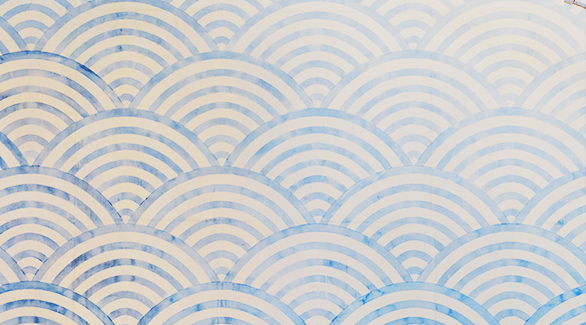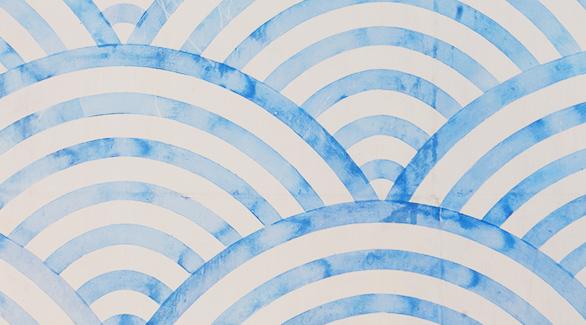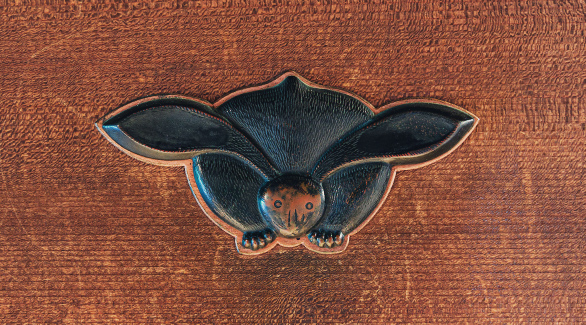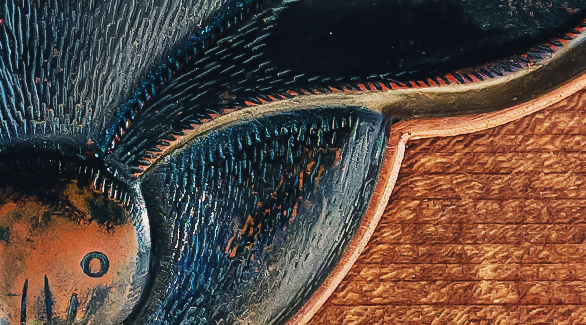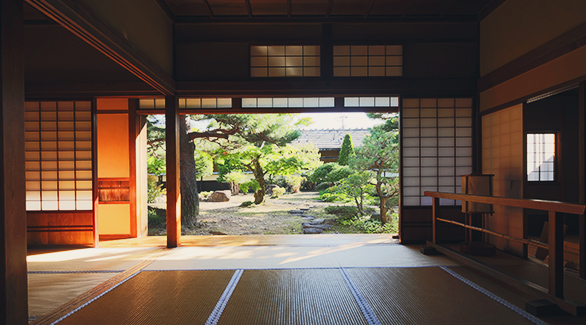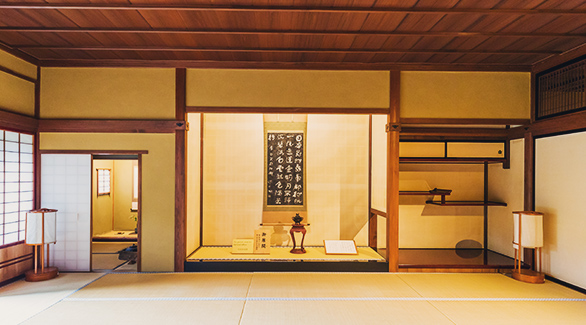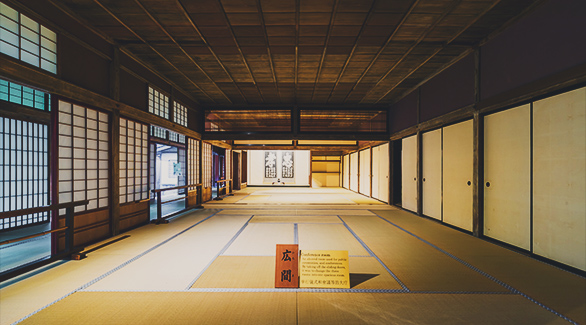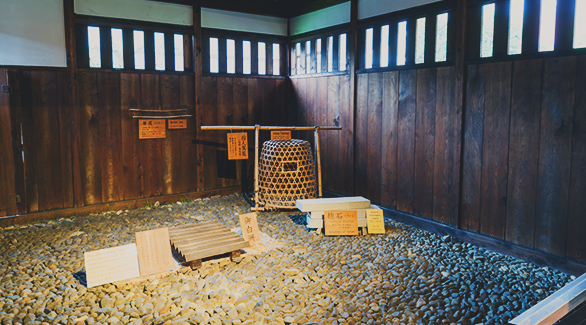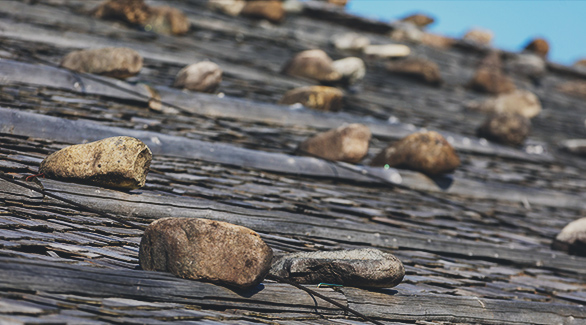Takayama Jinya Tour Highlights
Takayama Jinya is the only site in Japan of a provincial governor/magistrate’s office where the main building still remains. We introduce you here to six features that you must not miss amongst the many highlights of a tour of Takayama Jinya.
001
SEIGAIHAWave Ptattern
The seigaiha painted on the tokonoma (alcove) of the entrance is an auspicious pattern that imitates the waves of the ocean. This pattern was in fashion in the Edo period (1603 to 1868). It is said that the pattern of waves spreading out infinitely contains a wish for prosperity and peace that will last forever. Seigaiha were painted on the entire surface of entrance walls and fusuma (sliding doors) in addition to tokonoma at that time. The impressiveness of that would surely have overwhelmed visitors. The seigaiha you can currently see in the tokonoma is a restoration. You can see the original in the onkura.
002
MAMUKI RABBITSNail Head Concealers
The mamuki rabbits are decorations to hide the heads of nails that have been hit into the nageshi in the rooms. Rabbits give birth to many children. Accordingly, it is said that this auspicious design also carries the function of a talisman to protect buildings from fire.
*Nageshi: This is a component that is often seen in Japanese architecture. It is a component hit horizontally into the surfaces of pillars to connect them.
003
ARASHIYAMA NO MALiving Room of the Head Official
The arashiyama no ma is found in the official residence where the provincial governors/magistrates dispatched from Edo and their families lived. This room was used in the daily lives of the provincial governors/magistrates. A tearoom was established in the back. Incidentally, arashiyama no ma is the name it is known as but it was originally called goima.
004
OHIROMAReception Hall
The reception hall is a shoindzukuri (traditional style of Japanese residential architecture) room that was used for important annual events such as those at the beginning of a new year. It boasts the largest area inside Takayama Jinya with three rooms in connection that have a total size of 49 tatami mats. It is possible to enjoy a view of the garden that changes with each season through the porch.
005
OSHIRASULaw Court and Interrogation Room
The oshirasu is a place where investigations were carried out and judgments were announced. It is a room that served as a courtroom in trials. There are two oshirasu in the Jinya.
One is a place that we would nowadays call the point of contact in a government office where complaints or requests were received from villages. The other was a place where people who had committed crimes would be investigated and judged. In other words, it played the role of a court.
Investigations in the Edo period (1603 to 1868) emphasized confessions. Therefore harsh torture was sometimes employed when it was not otherwise possible to obtain a confession. It is however believed that the torture instruments in the Takayama Jinya were displayed to intimidate people. The torture actually appears to have been carried out in the prison (currently near Ebisaka in Kamichinomachi).
006
ONKURARice Storehouse
The onkura is a rice granary that stored the annual rice tax paid by neighboring villages. It was relocated from the sannomaru (outermost region) of Takayama Castle in 1695 shortly after Hida became a territory directly controlled by the Shogunate. The granary is believed to have been established around 1600 when sannomaru was built.
It is one of the oldest and largest rice granaries (thick earthen wall storehouses) from the Edo period (1603 to 1868) still in existence in Japan. A method of thatching called ishiokinagakurebuki in which boards are held down with wooden sticks and stones without using nails is employed for its distinctive thatched roof.
Japanese arborvitae of the family comprising the cypresses are used for the materials to take advantage of their advantage of repelling water due to their high oil content. (Sawara cypress and Japanese cedar have also been used recently.)
We continue to this day to preserve this construction method that utilizes materials for 20 years by turning them up/down and front/back in five-year turns. Nowadays, when thatched roofs are disappearing across Japan, it has become a challenge to pass on the techniques to bark and thatch lumber to ensure these traditions survive into the future.







